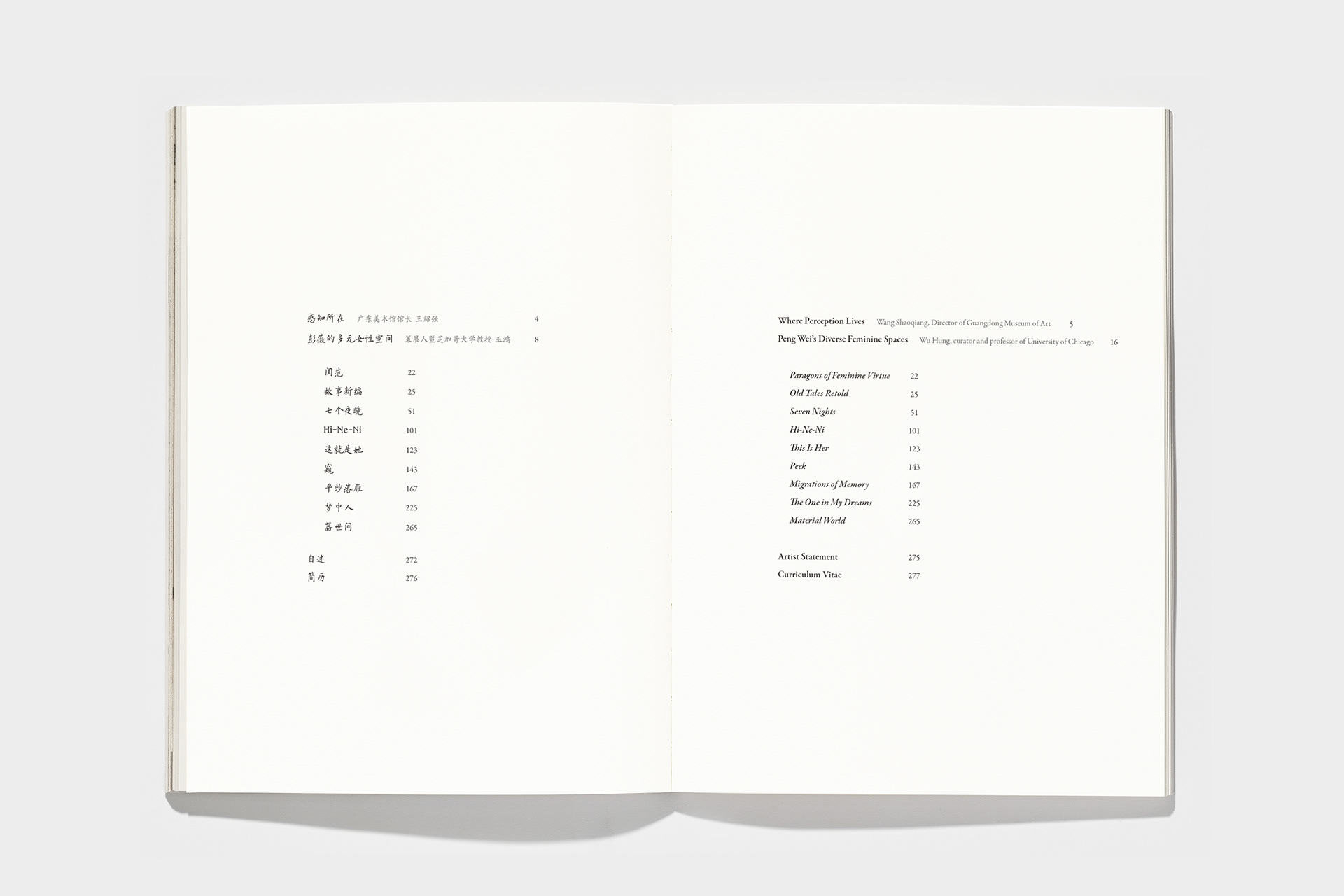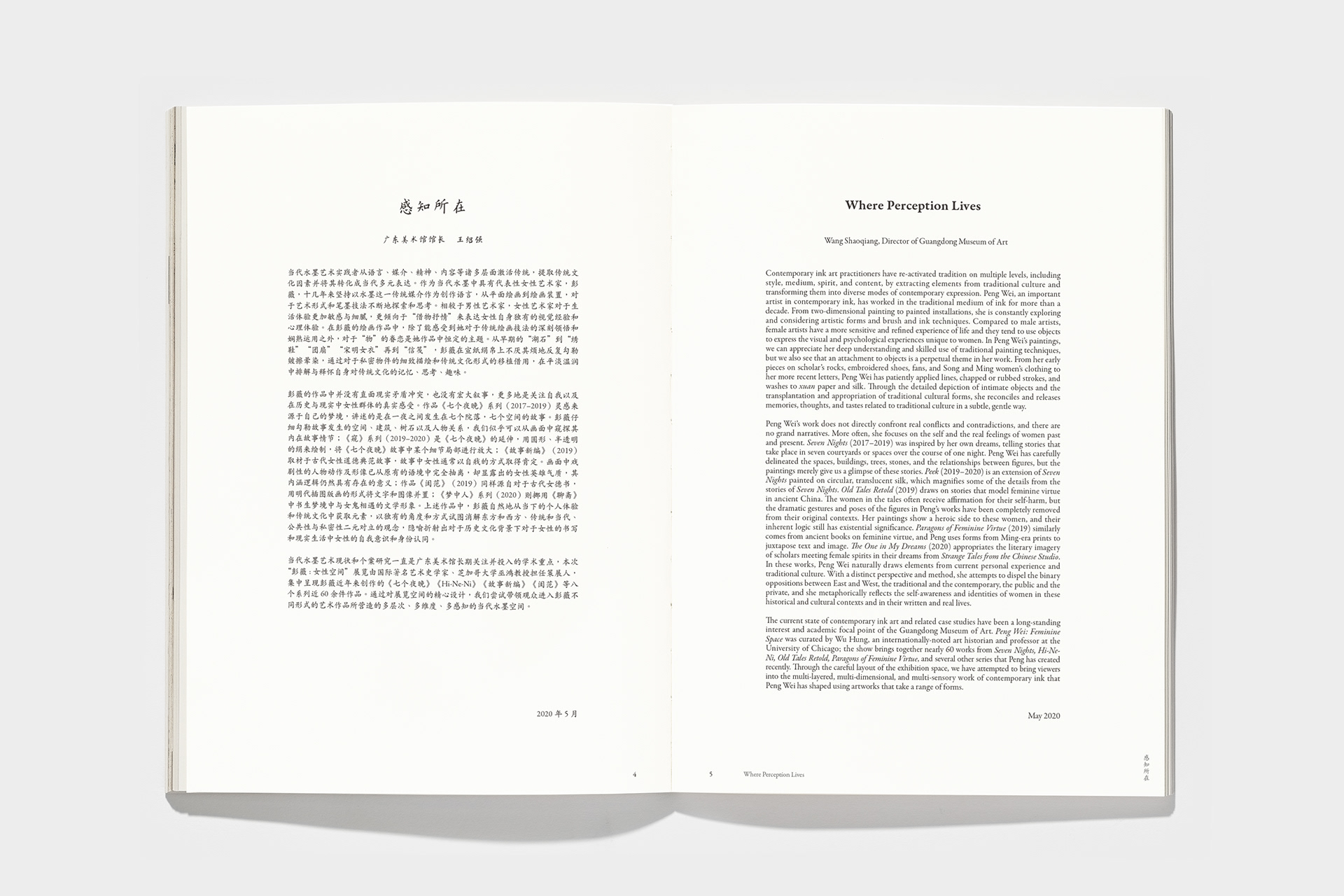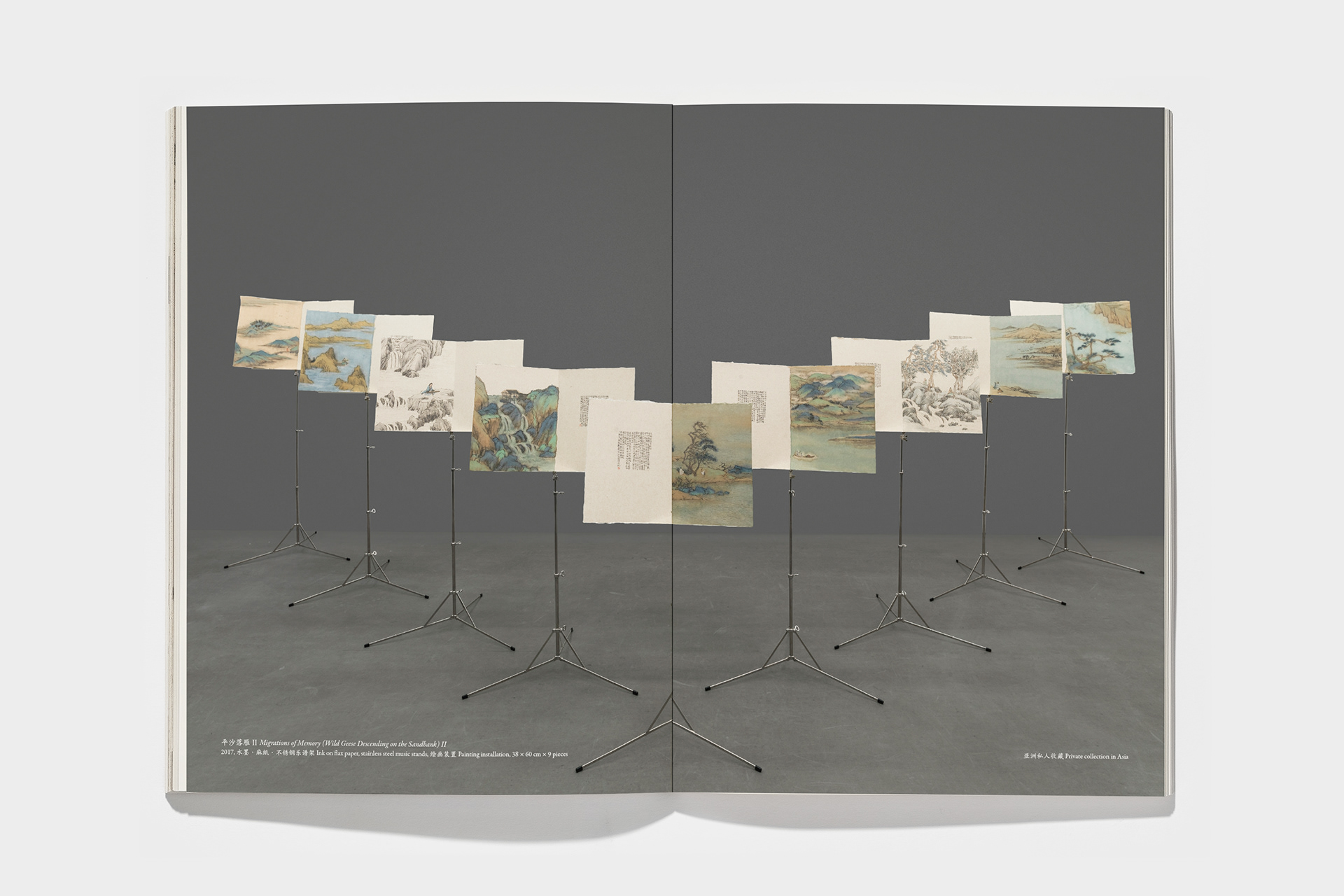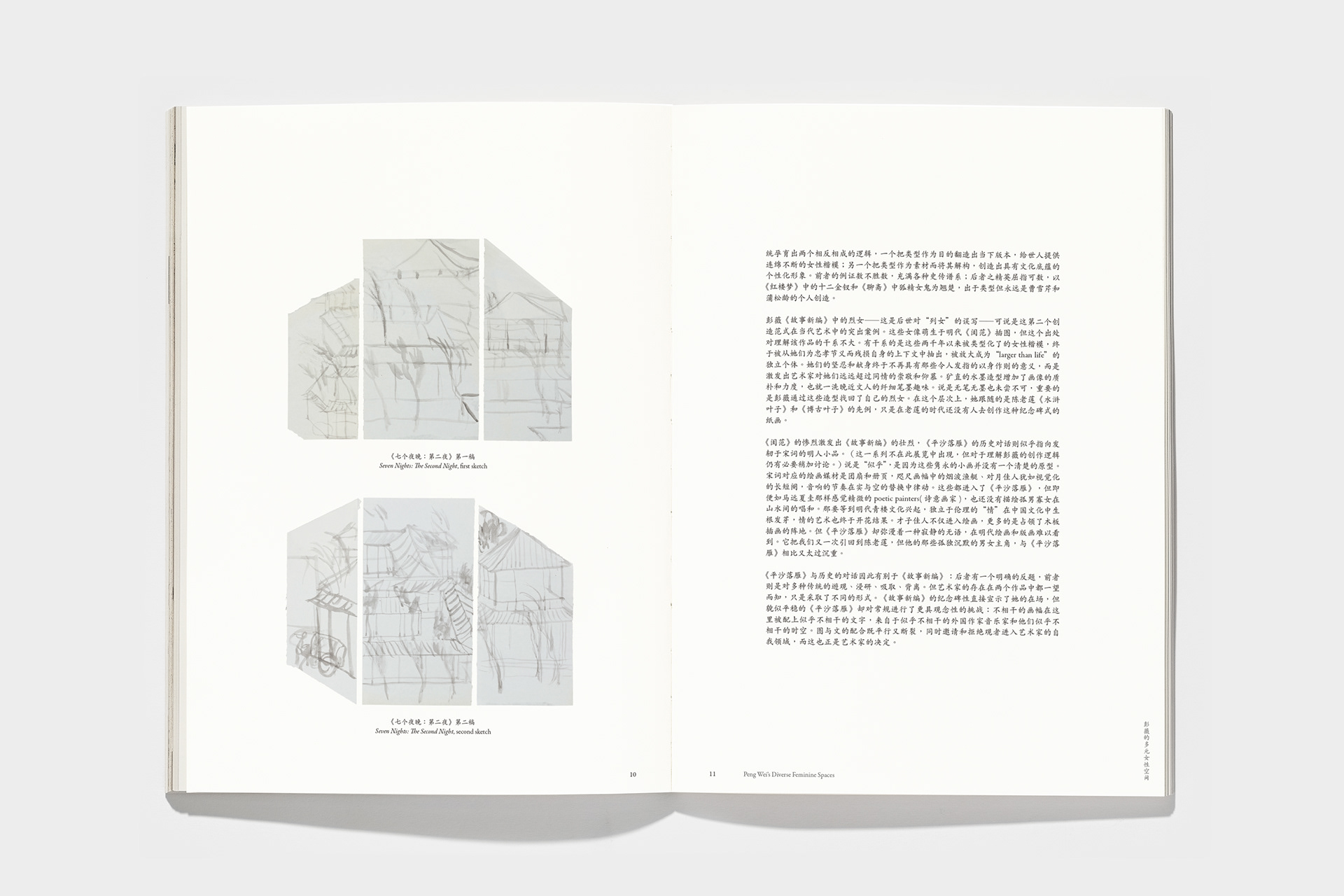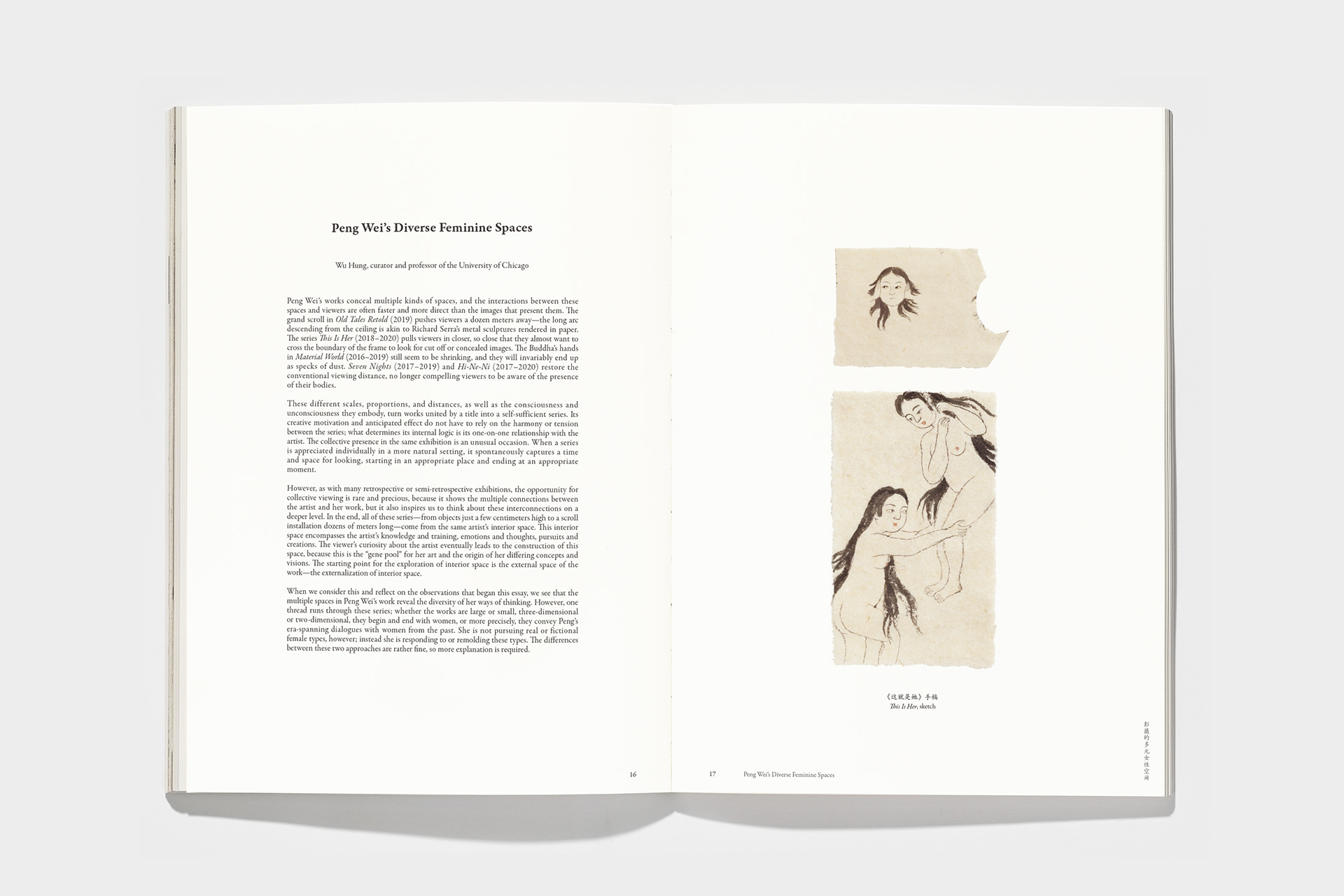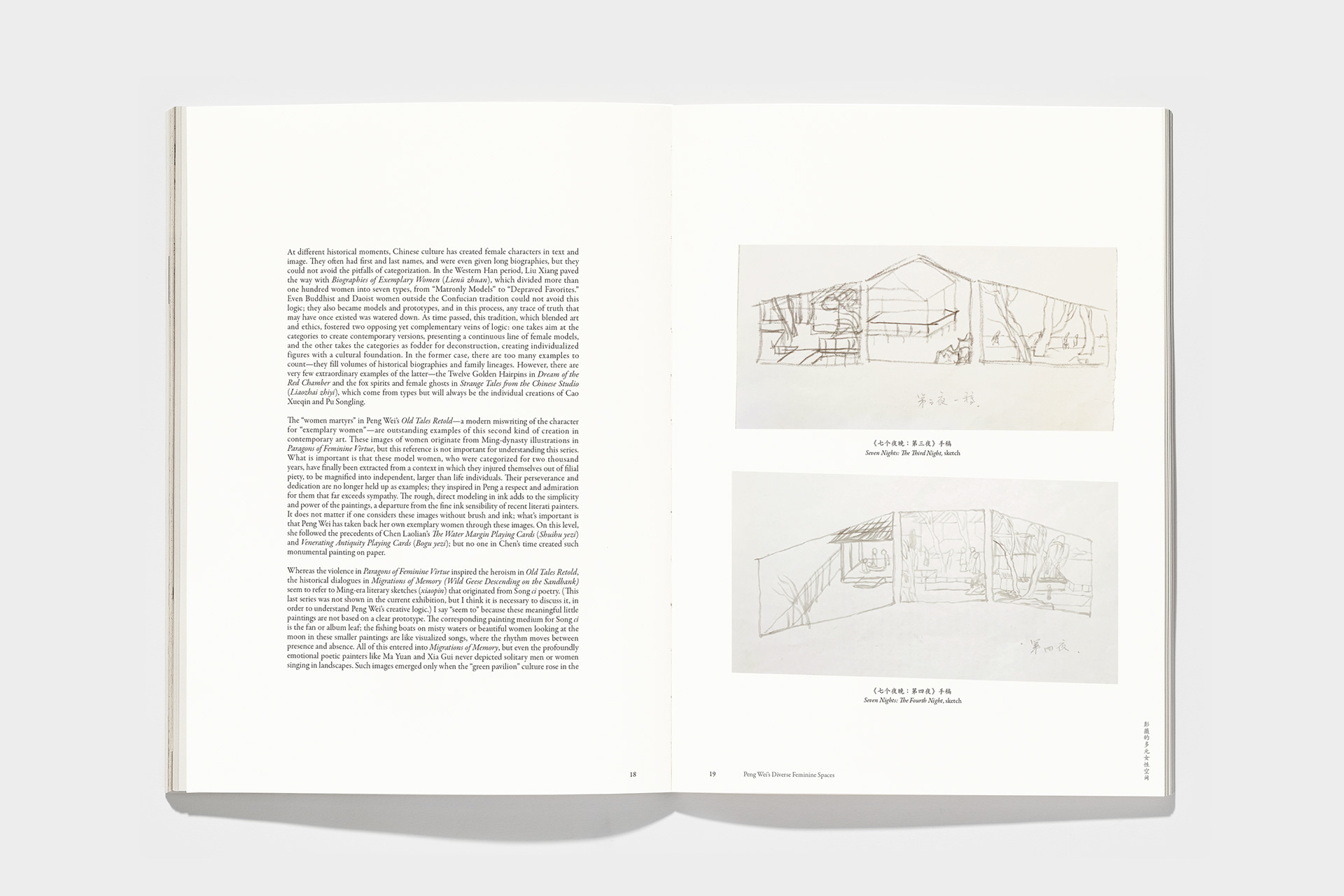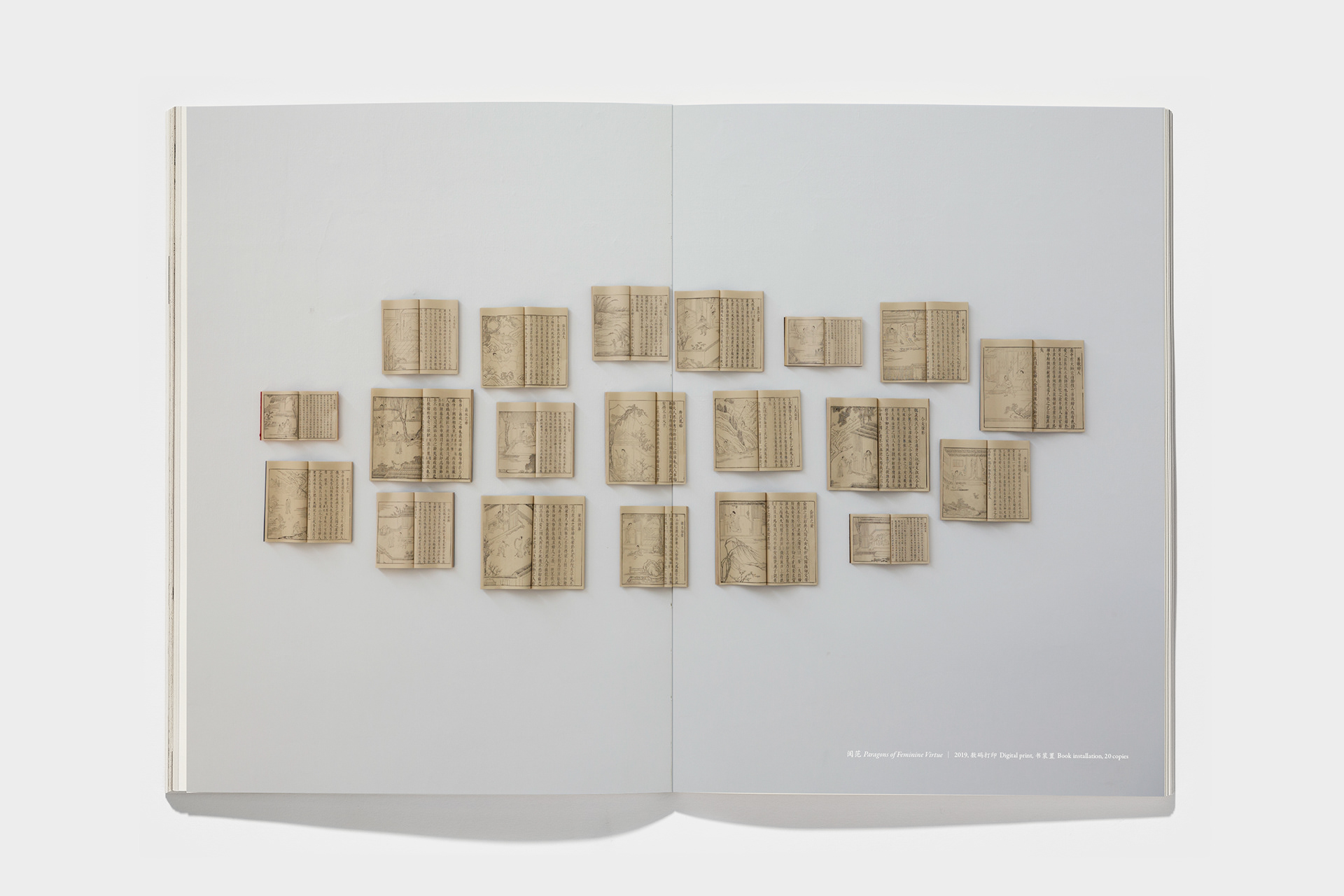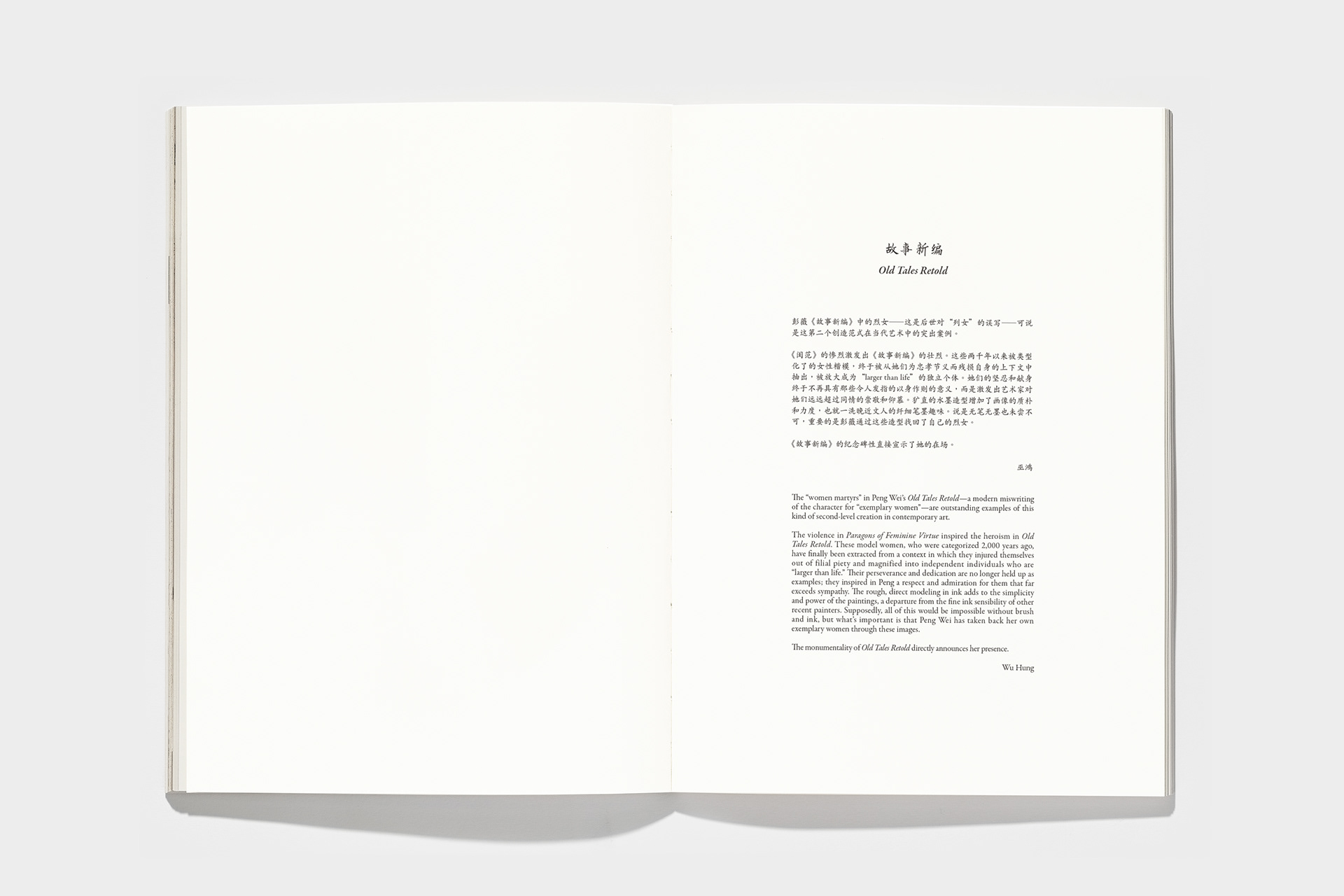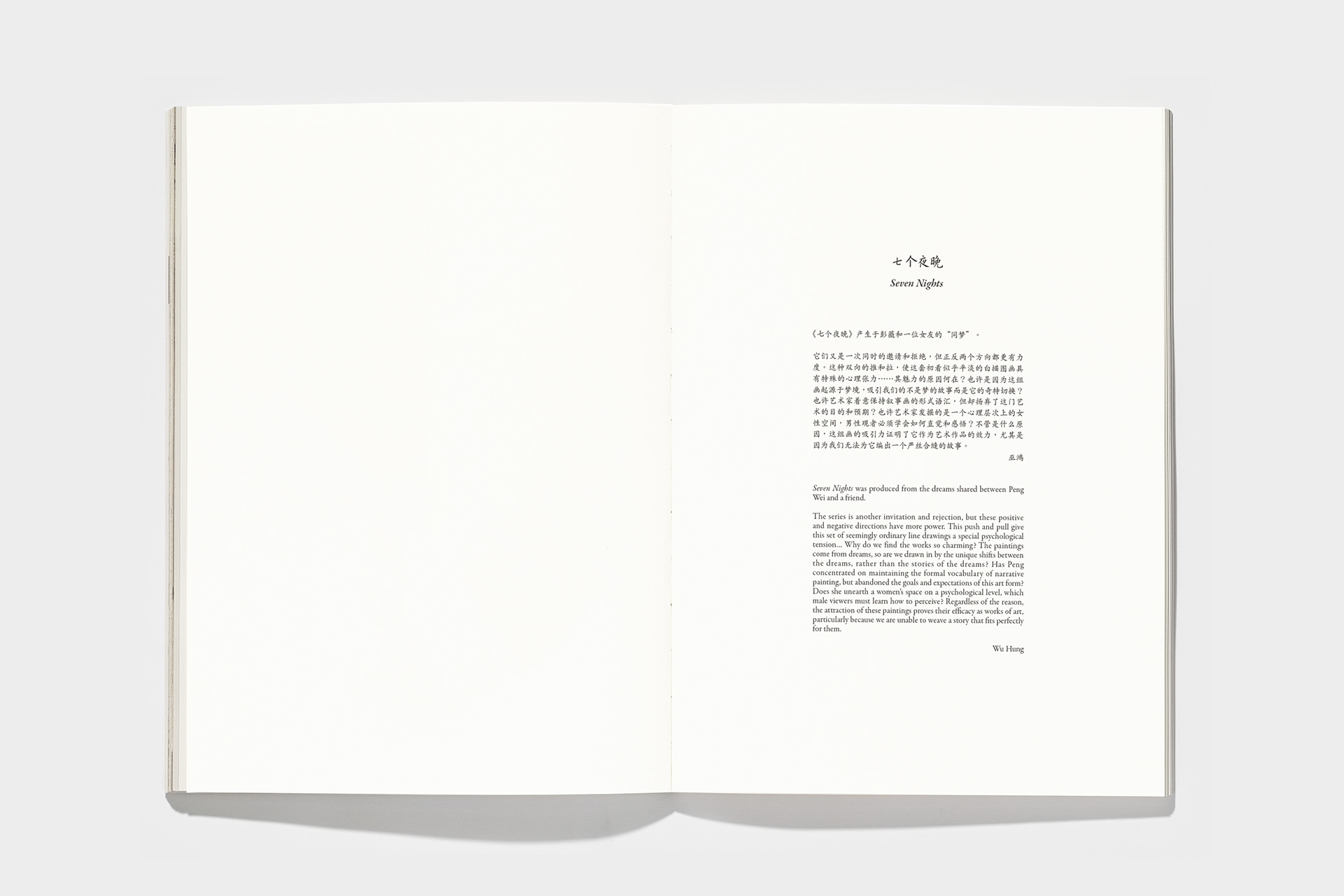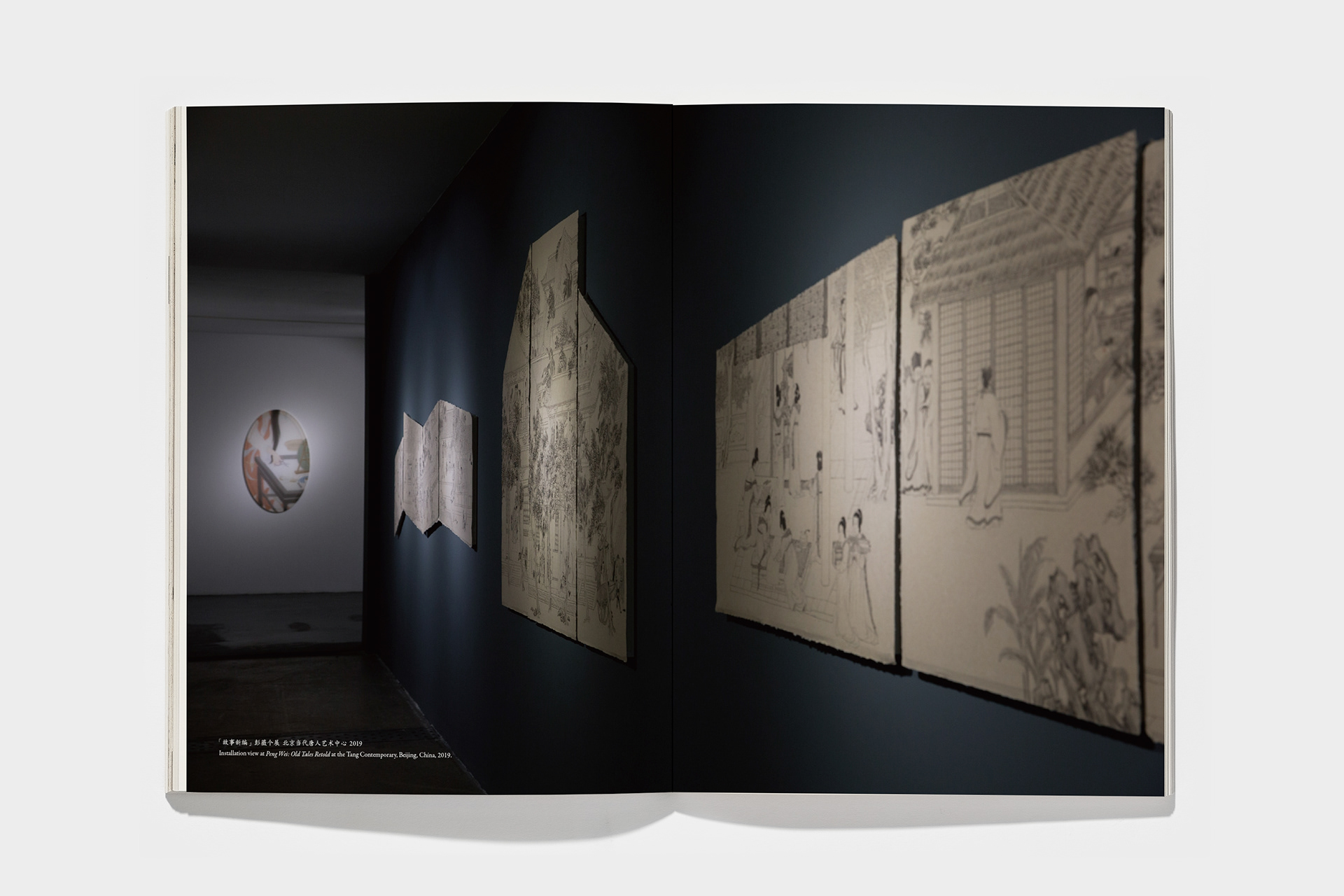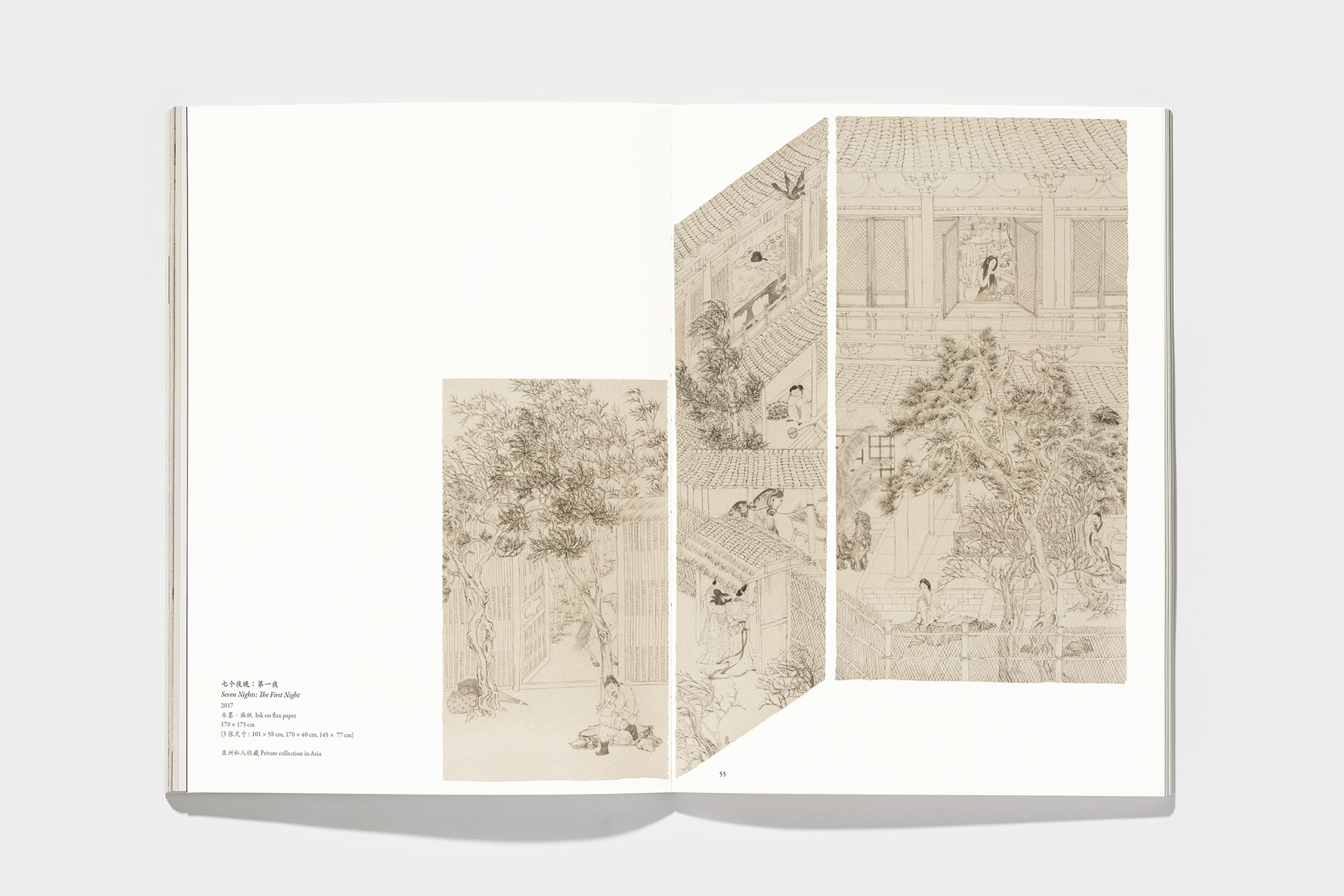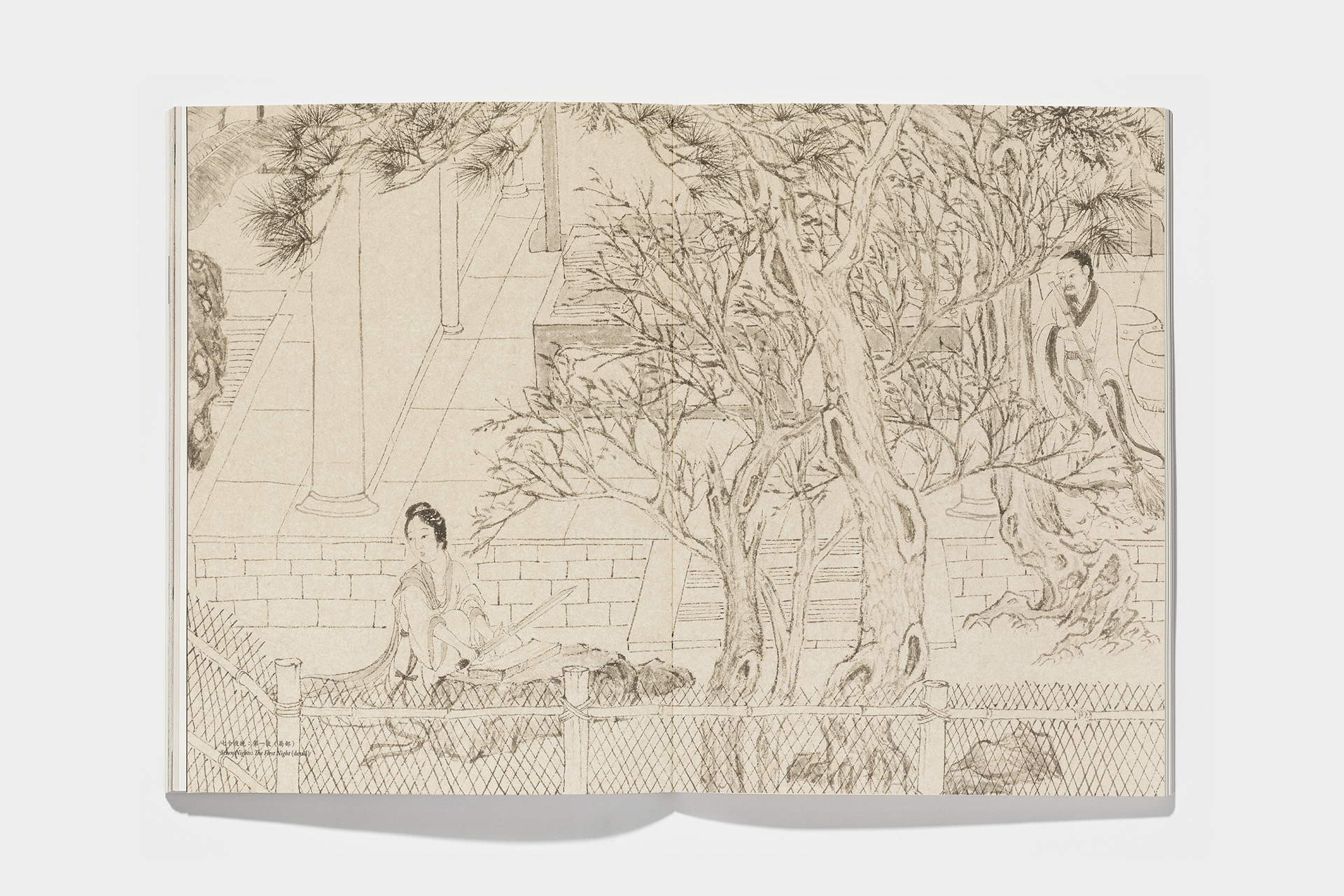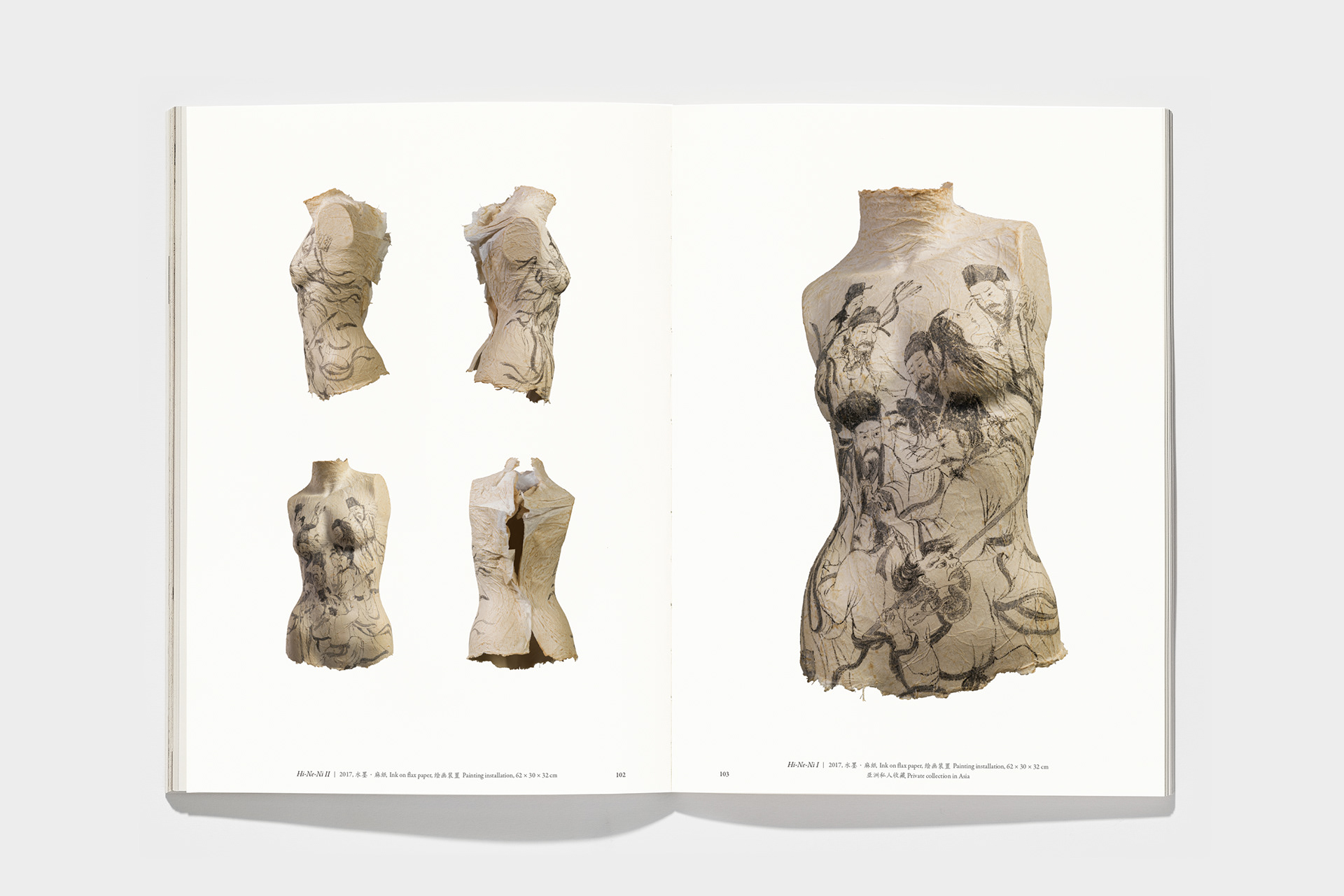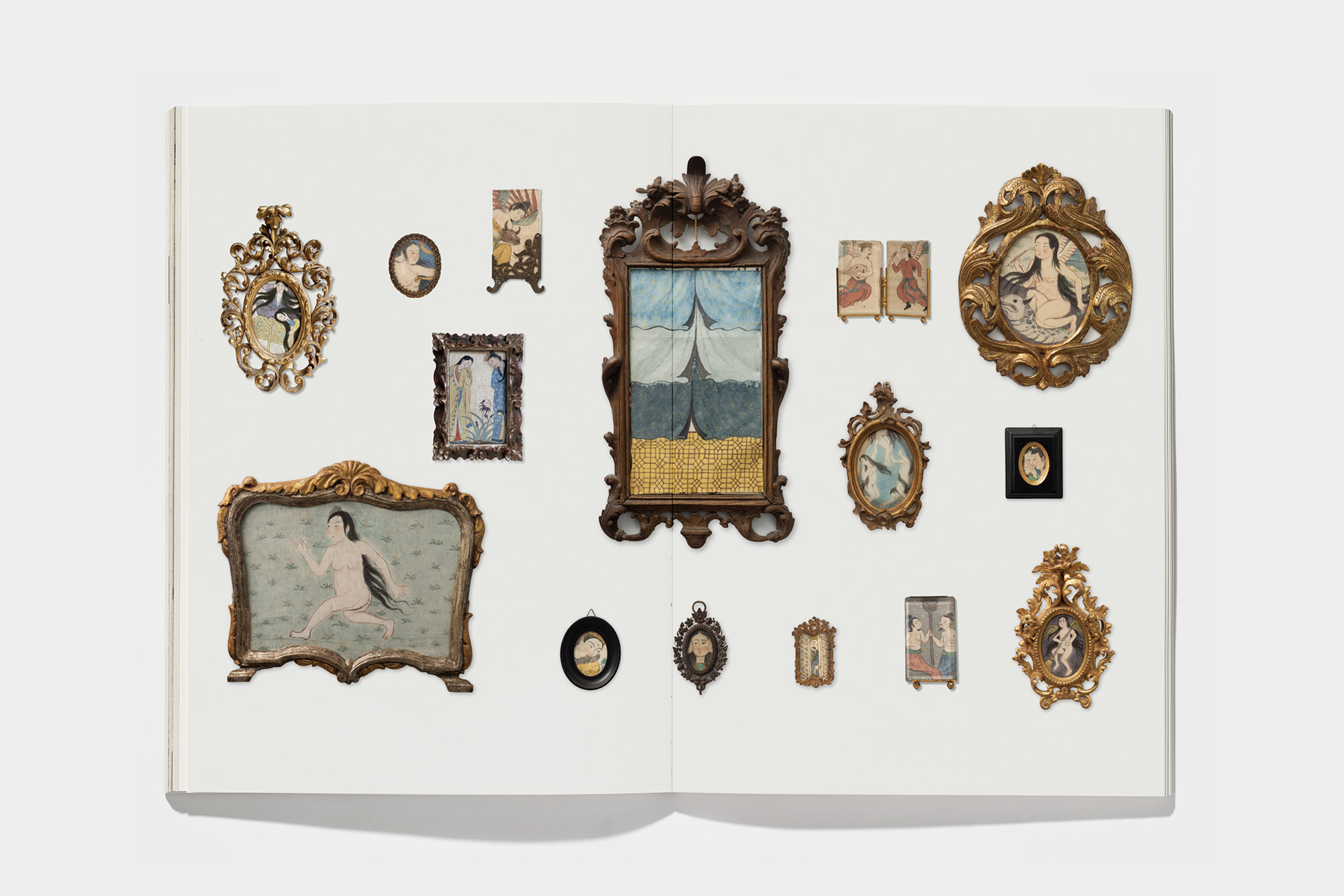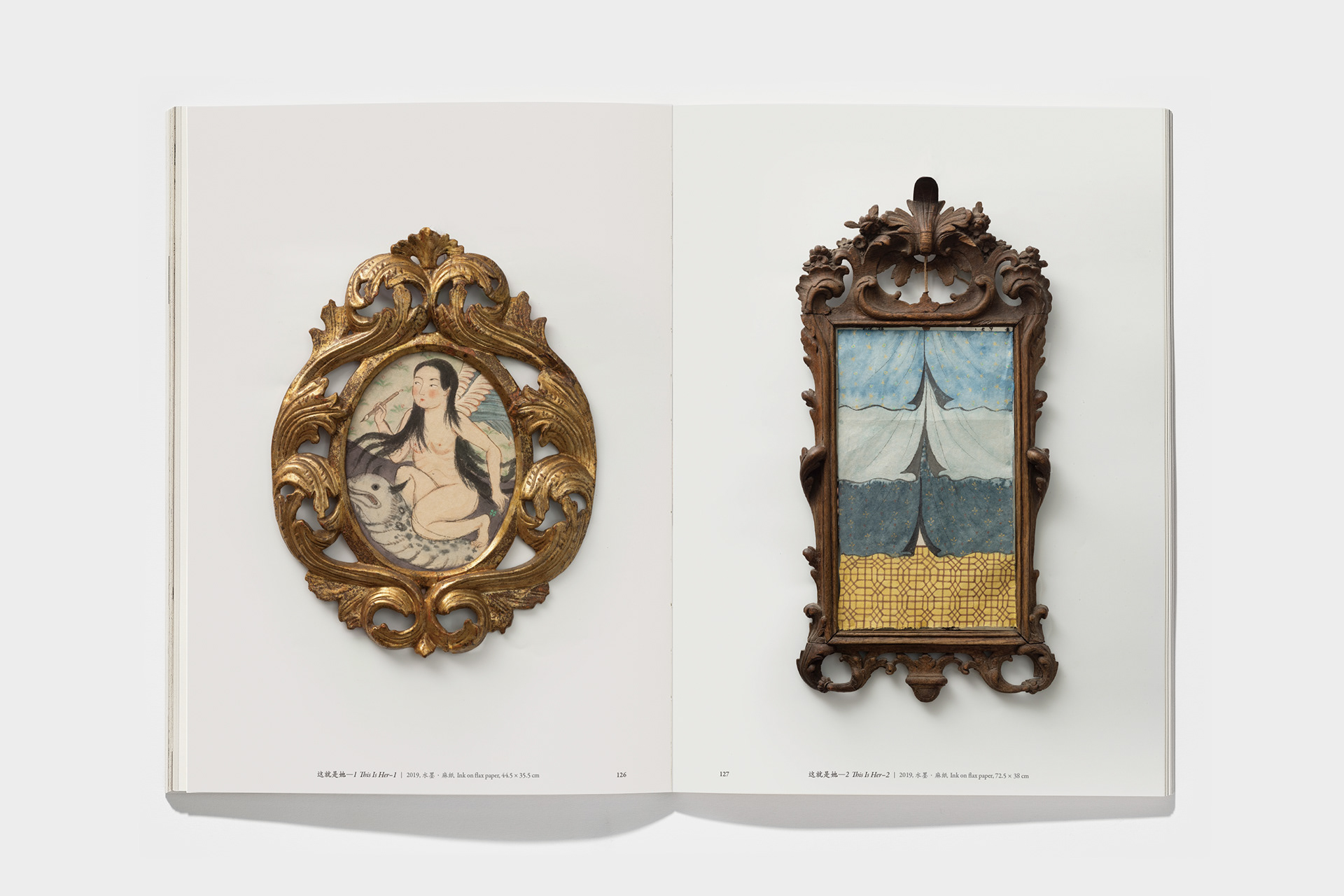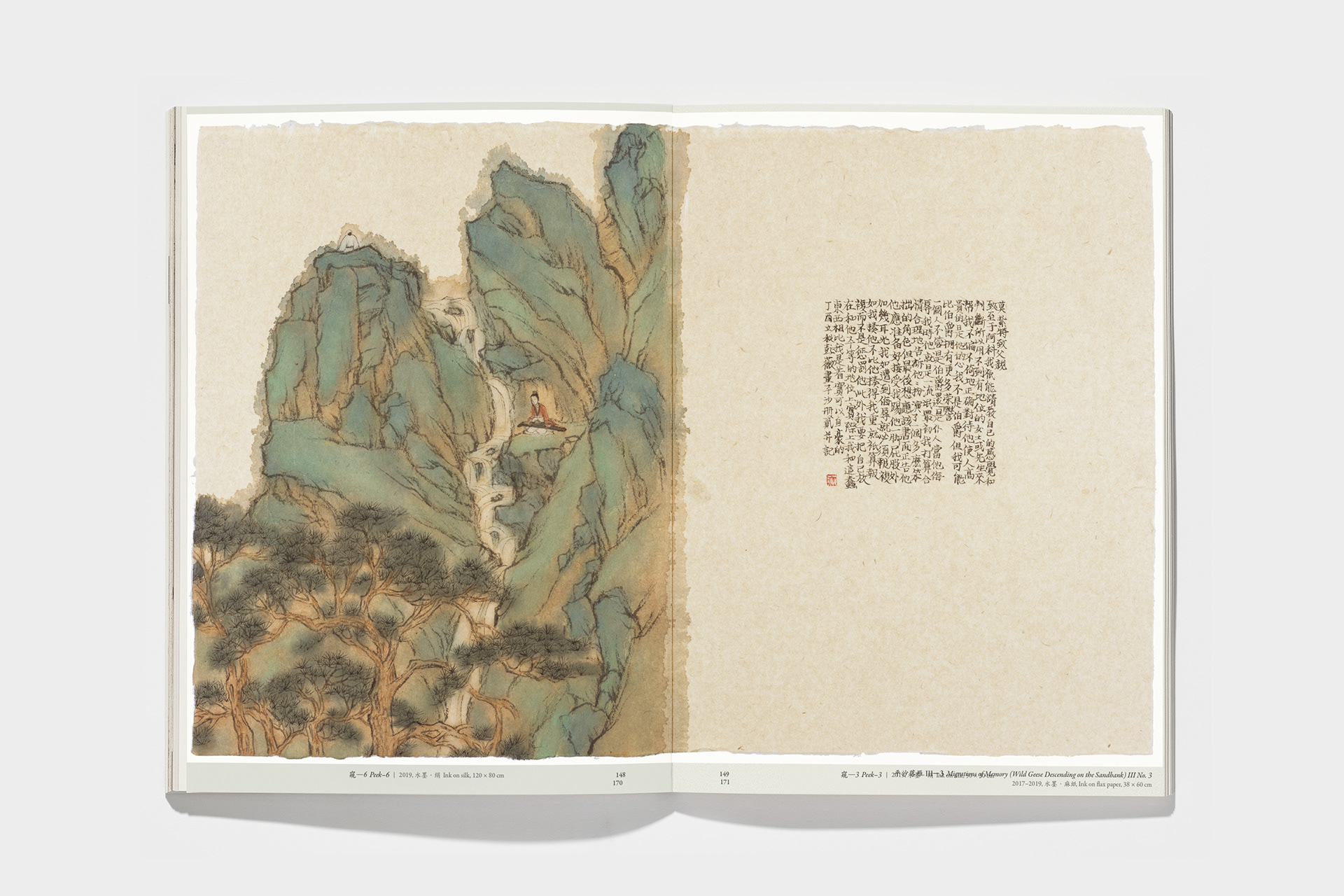彭薇『女性空間』
Feminine Space
彭薇的作品隱含著多種空間,它們與觀眾的互動常比承載的圖像更為迅速和直接。 《故事新編》(2019)的巨大長卷把觀者推向十數米之外,下垂的長弧似乎將理查 德.塞拉的鋼雕化作紙本。《這就是她》(2018–2020)把視線拉近,近到幾乎想越 過畫框去尋找被切割和隱藏的畫面。《器世間》(2016–2019)的微型佛手好像仍在
萎縮之中,在想像的終點化為紅塵一粒。《七個夜晚》(2017–2020)和《Hi-Ne-Ni》 (2017–2020)復原了常規觀看的距離,但也就不再迫使觀者意識到自己身體的存在。
這些不同的尺度、比例、距離以及所包含的意識和無意識,使每個標題下的作品成 為自給自足的系列。系列之間的和諧或張力並不必須是它們的創作動因和預想效果; 決定其內在邏輯的是與藝術家一對一的關係。它們在同一展場中集體現身是個不尋 常的機遇。在更自然的場合中每個系列會被獨立欣賞,自發掌控著觀看的空間和時 間,在適當的地方開始,適當的時刻結束。
Peng Wei’s works conceal multiple kinds of spaces, and the interactions between these spaces and viewers are often faster and more direct than the images that present them. The grand scroll in Old Tales Retold (2019) pushes viewers a dozen meters away—the long arc descending from the ceiling is akin to Richard Serra’s metal sculptures rendered in paper. The series This Is Her (2018–2020) pulls viewers in closer, so close that they almost want to cross the boundary of the frame to look for cut off or concealed images. The Buddha’s hands in Material World (2016–2019) still seem to be shrinking, and they will invariably end up as specks of dust. Seven Nights (2017–2019) and Hi-Ne-Ni (2017–2020) restore the conventional viewing distance, no longer compelling viewers to be aware of the presence of their bodies.
These different scales, proportions, and distances, as well as the consciousness and unconsciousness they embody, turn works united by a title into a self-sufficient series. Its creative motivation and anticipated effect do not have to rely on the harmony or tension between the series; what determines its internal logic is its one-on-one relationship with the artist. The collective presence in the same exhibition is an unusual occasion. When a series is appreciated individually in a more natural setting, it spontaneously captures a time and space for looking, starting in an appropriate place and ending at an appropriate moment.
擷取|巫鸿 (2020)。〈彭薇的多元女性空间〉。《女性空间》,頁 8。臺北:耿藝術基金會。
〔設計/Designed〕和設計
〔攝影/Photo〕朱淇宏
〔年份/Year〕2020
〔攝影/Photo〕朱淇宏
〔年份/Year〕2020
